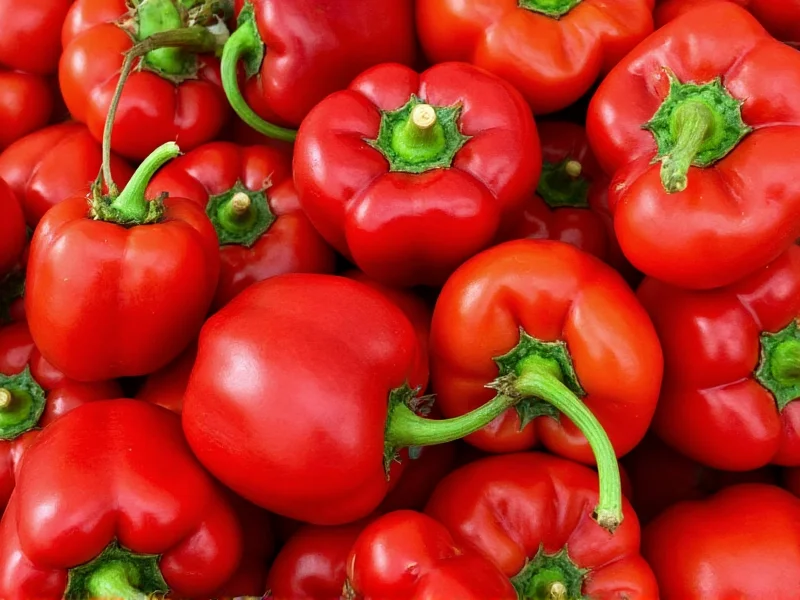Understanding Paprika's Color Spectrum
When exploring what color is paprika spice, it's essential to recognize that this versatile seasoning doesn't have just one uniform shade. The color variation directly correlates with the specific pepper cultivar used, growing conditions, and processing techniques. Unlike many assume, paprika isn't always the same intense red you might picture.
Types of Paprika and Their Distinctive Colors
Different paprika varieties produce distinctive color profiles that indicate their flavor characteristics and culinary applications. The color serves as a visual indicator of what to expect from each type:
| Paprika Type | Color Characteristics | Flavor Profile |
|---|---|---|
| Sweet Hungarian Paprika | Bright, vibrant red with orange undertones | Mild, sweet, slightly fruity |
| Smoked Spanish Paprika (Pimentón) | Deep brick red to mahogany | Rich, smoky, varying from sweet to hot |
| Hot Paprika | Bright crimson to dark red | Spicy with varying heat levels |
| Sweet California Paprika | Lighter orange-red | Mild and sweet with less complexity |
Why Paprika Appears Red: The Science Behind the Color
The distinctive red color of paprika comes primarily from carotenoid pigments, especially capsanthin and capsorubin. These natural compounds develop as peppers ripen on the vine. Why is paprika red specifically? As peppers mature from green to red, chlorophyll breaks down while carotenoids accumulate, creating that signature warm spectrum.
Several factors influence the final color:
- Ripeness at harvest: Fully ripe peppers produce deeper red tones
- Drying methods: Sun-dried versus smoked processing affects color intensity
- Pepper variety: Different cultivars contain varying pigment concentrations
- Storage conditions: Light and oxygen exposure can fade color over time
Color as an Indicator of Quality and Freshness
When evaluating paprika, color serves as a reliable freshness indicator. Vibrant, intense reds typically signal recently ground, high-quality spice. Dull, faded, or brownish tones suggest older product that has lost potency. Properly stored paprika maintains its rich color for 6-12 months, while exposure to light accelerates color degradation.
Professional chefs often assess paprika quality by its color intensity—a deep, uniform red without dark specks indicates careful processing and sorting. This visual assessment helps determine whether the spice will deliver optimal color and flavor to dishes.
How Paprika Color Affects Culinary Applications
The color of paprika significantly impacts both the visual appeal and flavor profile of dishes. Understanding how paprika color affects flavor helps home cooks and professionals make informed choices:
- Bright orange-red varieties typically provide milder flavor and vibrant color to dishes like deviled eggs and potato salads
- Deep brick red smoked paprika imparts both rich color and distinctive smoky notes to paella, chorizo, and barbecue rubs
- Dark burgundy varieties often indicate higher heat levels and more complex flavor profiles suitable for stews and braises
When recipes specify paprika without indicating type, the expected color contribution matters. For dishes where visual presentation is crucial, such as Hungarian goulash or Spanish patatas bravas, selecting the appropriate color variety ensures authentic appearance and flavor.
Common Misconceptions About Paprika Color
Several myths persist about paprika's color. Many believe that paprika color variations by type directly correlate with heat level, but this isn't always accurate. While some hot varieties do appear darker, Hungarian sweet paprika maintains a vibrant red despite being mild.
Another misconception is that all paprika should look identical. In reality, regional variations and processing methods create legitimate color differences that reflect authentic production practices. The uniform bright red often seen in commercial products sometimes indicates added colorants rather than natural variation.
Maintaining Paprika's Vibrant Color in Your Kitchen
To preserve paprika's characteristic red hue in your cooking:
- Add paprika toward the end of cooking to prevent color degradation from heat
- Store in airtight containers away from light and moisture
- Consider toasting whole peppers before grinding for deeper color development
- Use oil-based carriers to help the color disperse evenly in dishes
Understanding these principles helps explain different colors of paprika explained through practical kitchen application rather than just theoretical knowledge.
Frequently Asked Questions
Does the color of paprika indicate its heat level?
Not necessarily. While some hot paprika varieties appear darker, color alone doesn't reliably indicate heat level. Hungarian sweet paprika maintains a vibrant red despite being mild, while some medium-heat varieties may appear similar to sweet types. The best way to determine heat level is by checking the product label for specific variety information rather than relying solely on color.
Why does my paprika sometimes look less red over time?
Paprika's color fades due to exposure to light, air, and moisture. The carotenoid pigments responsible for its red hue are sensitive to oxidation. Properly stored in an airtight container away from direct light, paprika maintains its vibrant color for 6-12 months. If your paprika has turned brownish or dull, it's likely lost significant flavor potency along with its color.
Can paprika be colors other than red?
Traditional paprika is always some variation of red, ranging from bright orange-red to deep brick red. However, some specialty products might blend paprika with other spices to create different hues. Pure paprika made from dried and ground Capsicum annuum peppers will always fall within the red spectrum due to the natural carotenoid pigments present in ripe peppers.
Does smoked paprika have a different color than regular paprika?
Yes, smoked paprika (pimentón) typically has a deeper, darker red color compared to sweet or hot varieties. The smoking process contributes to this richer hue, often giving it brick red or mahogany tones. This darker color corresponds with the distinctive smoky flavor profile that makes Spanish pimentón unique among paprika varieties.











 浙公网安备
33010002000092号
浙公网安备
33010002000092号 浙B2-20120091-4
浙B2-20120091-4